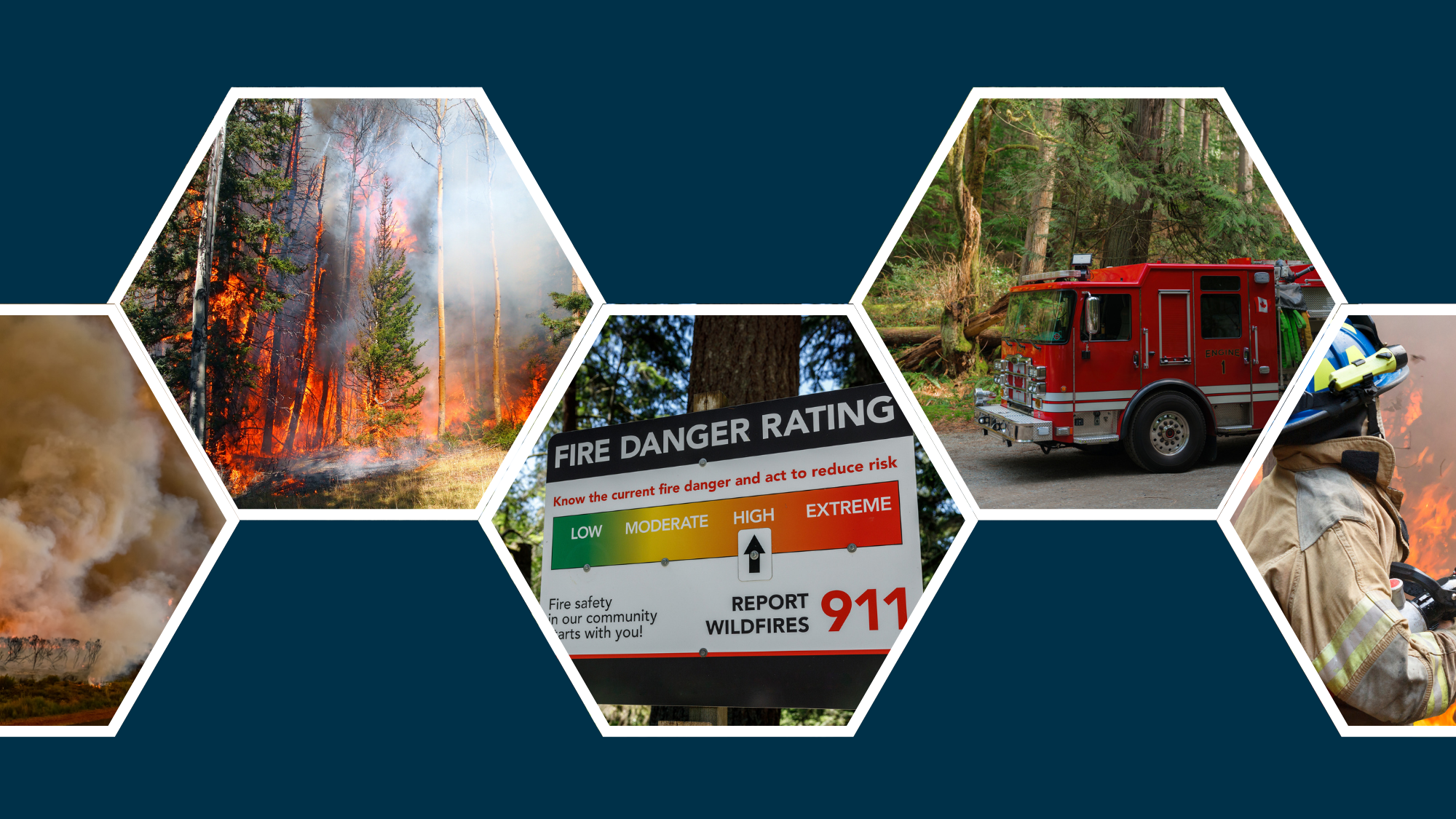by Alyssa Hill
Key messages:
- Wildfire impacts in B.C. are increasing and likely to get worse as climate change drives longer fire seasons and more extreme fire weather, drought, and lightning
- Local, regional, and First Nations governments have a key role in wildfire mitigation, preparedness, response, and recovery
In British Columbia, many communities have a new name for summer: wildfire season. Local decision-makers like municipal councils and staff, Nation councils, and other leaders have a critical role to play in reducing wildfire risk and safeguarding their communities during the season of smoke and fire. Here’s the latest information on climate change and wildfire, and what you need to know as you plan for wildfire mitigation and safety.
Fire is a natural process and many landscapes and ecosystems in B.C. have evolved with fire. However, B.C. has experienced increased wildfire activity over the last 20 years. 2017, 2018, 2021, and 2023 marked four of the most severe fire seasons in terms of area burned, number of wildfires, number of people evacuated, and costs of response and damage.
Research shows that climate change is making wildfires larger, more frequent, and more severe. Climate change is driving wildfire activity in several ways:
- Extreme weather conditions conducive to starting and spreading fires (i.e. hot, dry, and windy conditions) are happening more often.
- Warmer spring temperatures, earlier snowmelt, and warmer fall temperatures are making fire seasons longer.
- Lightning strikes, which ignite wildfires, are happening more often.
It’s not just climate change that is driving more wildfires though — land use policies and forest practices have also contributed to increased wildfire risk. B.C. has a long history of putting fires out and keeping fire off the landscape to protect timber and nearby communities.
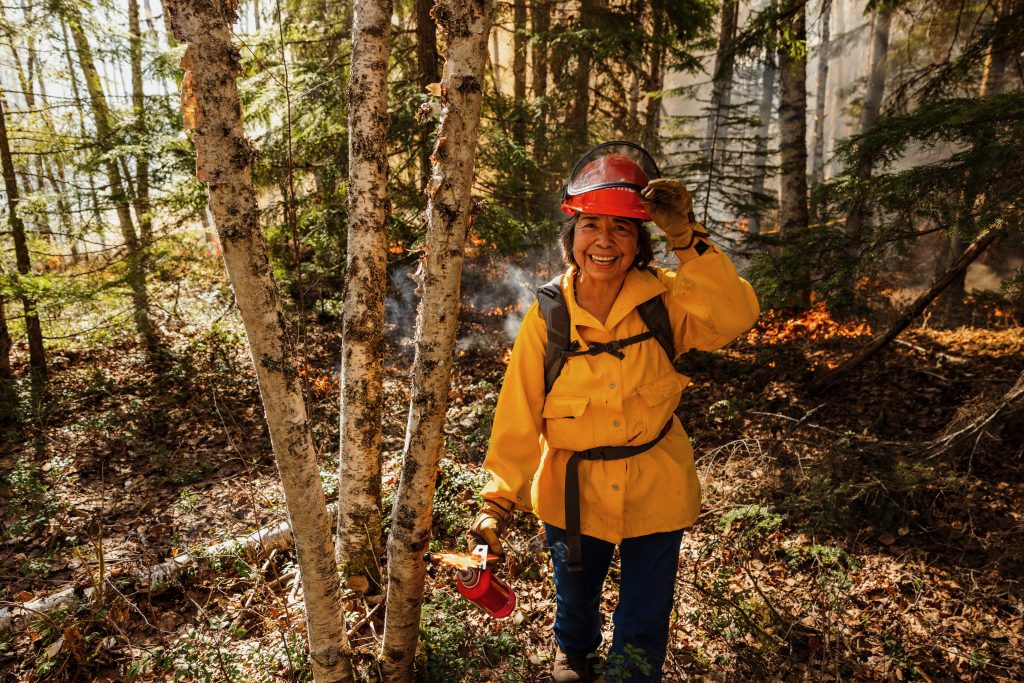
Indigenous communities across Canada have used fire, through cultural burning, since time immemorial. Indigenous fire stewardship and cultural burning have many benefits including increasing biodiversity, promoting certain plants, habitats, or landscapes, reducing the risk of catastrophic wildfires, and sustaining knowledge systems, culture, ceremony, and subsistence practices. Indigenous fire stewardship was systematically disrupted by colonization, namely the Indian Act, the Reserve System, and Residential Schools, and burning of any kind was banned in B.C. through policies like the Bush Fire Act.
Photo: Elder Darlene Vegh of Gitanyow Nation leads a cultural burn in Gitanyow territory. Credit: Marty Clemens
Decades of fire suppression along with forest management practices (e.g. logging fire-resistant trees, not burning “slash” after logging, and replanting monocultures) mean that many forests and grasslands haven’t burned for years and have accumulated wildfire “fuel.”
At the same time, more communities across B.C. are at risk to wildfires because they live in or near the “wildland urban interface,” where forests (and potentially fire) meet communities. Communities like Lytton, West Kelowna, and many others have experienced the effects of severe and out of control wildfires. These effects have been well-documented by researchers and communities alike.

Health: Wildfires have widespread impacts on our health. Poor air quality from smoke can increase respiratory issues, emergency department visits, and hospitalizations. Wildfires can also have negative mental health effects, particularly related to evacuation and post-wildfire recovery.

Economy and livelihoods: Wildfires disrupt tourism, forestry, energy production, and agriculture resulting in lost revenue. Government spending on wildfire response and damages is increasing, with the 2023 season costing $1 billion and contributing to the province’s deficit for the 2023/24 fiscal year.

Homes and infrastructure: Wildfires can damage homes and public and private infrastructure. Insured losses from the 2023 season were more than $720 million and insurance premiums in high-risk areas are increasing.
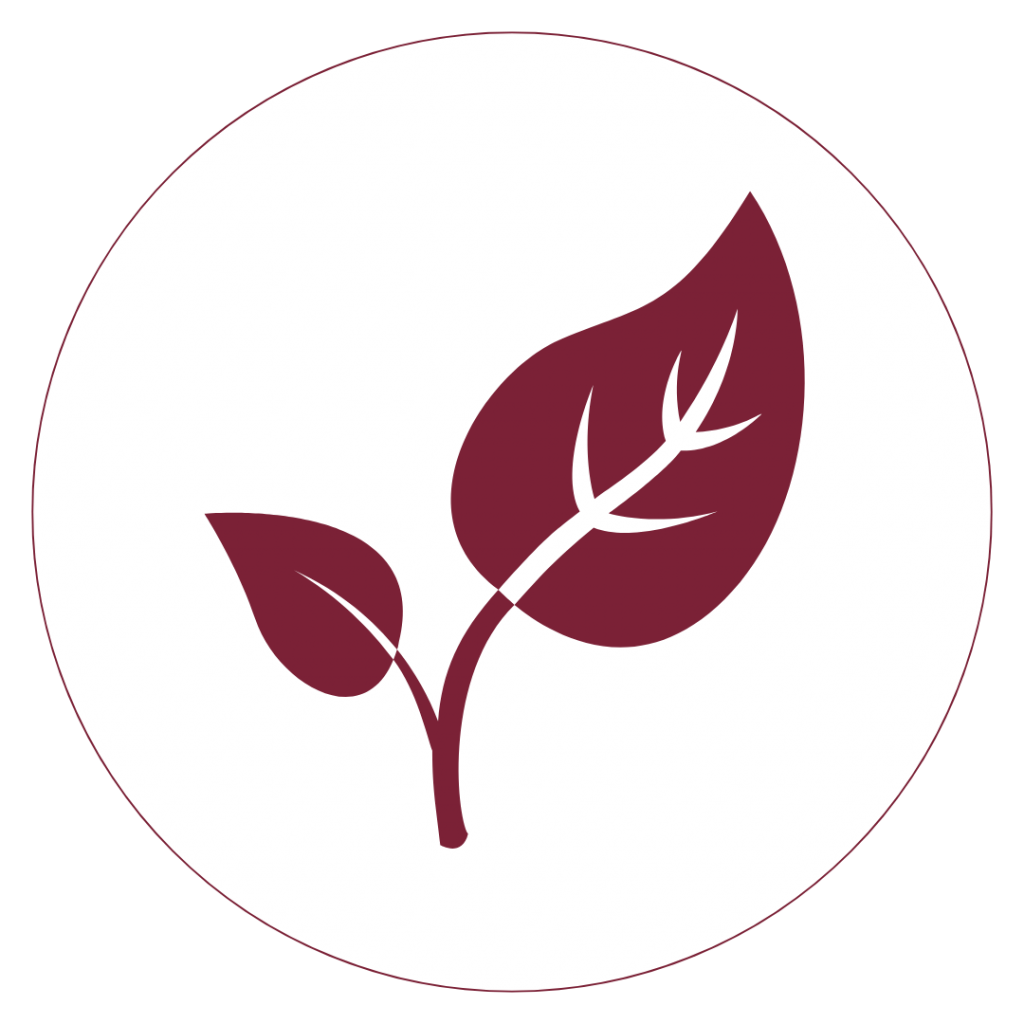
Ecosystems: While fire can be beneficial for ecosystems, severe wildfires can have negative effects on biodiversity, soil and landscape productivity, contaminate freshwater and drinking water and disrupt salmon and aquatic ecosystems. Wildfires can change hydrology and watershed function and increase the chance of other events like floods and landslides.

Indigenous communities: Indigenous communities across Canada have knowledges and solutions for co-existing with fire but are also disproportionately affected by severe wildfires and evacuations. Approximately 80% of Indigenous communities are in or near forests that burn frequently and when communities and their territories experience wildfires, the interconnected cultural, social, environmental, and economic impacts can take years to recover from.
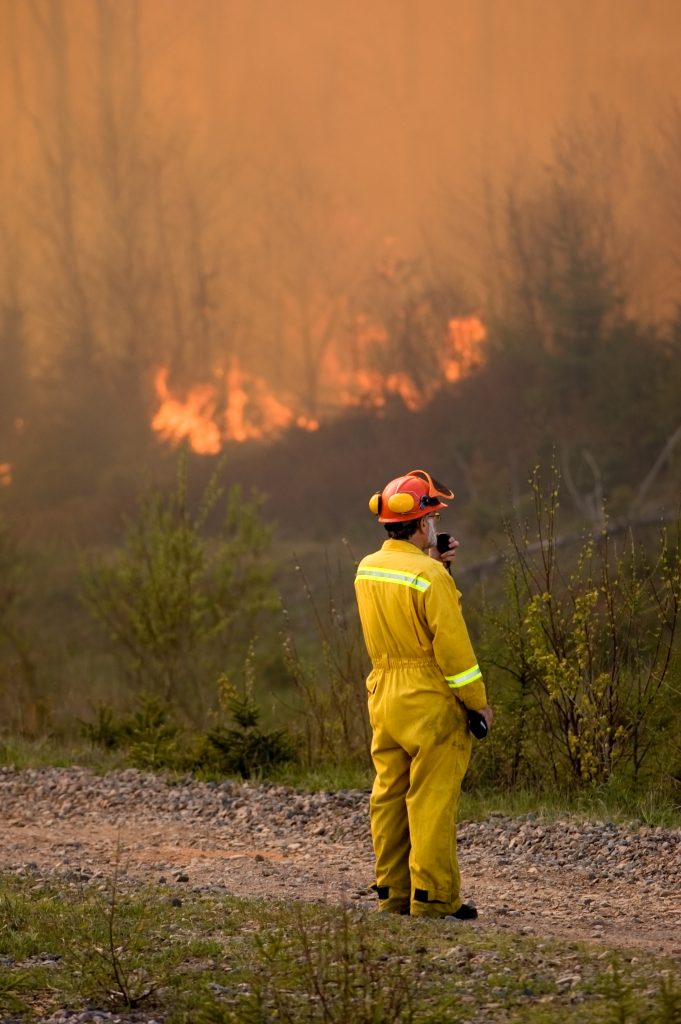
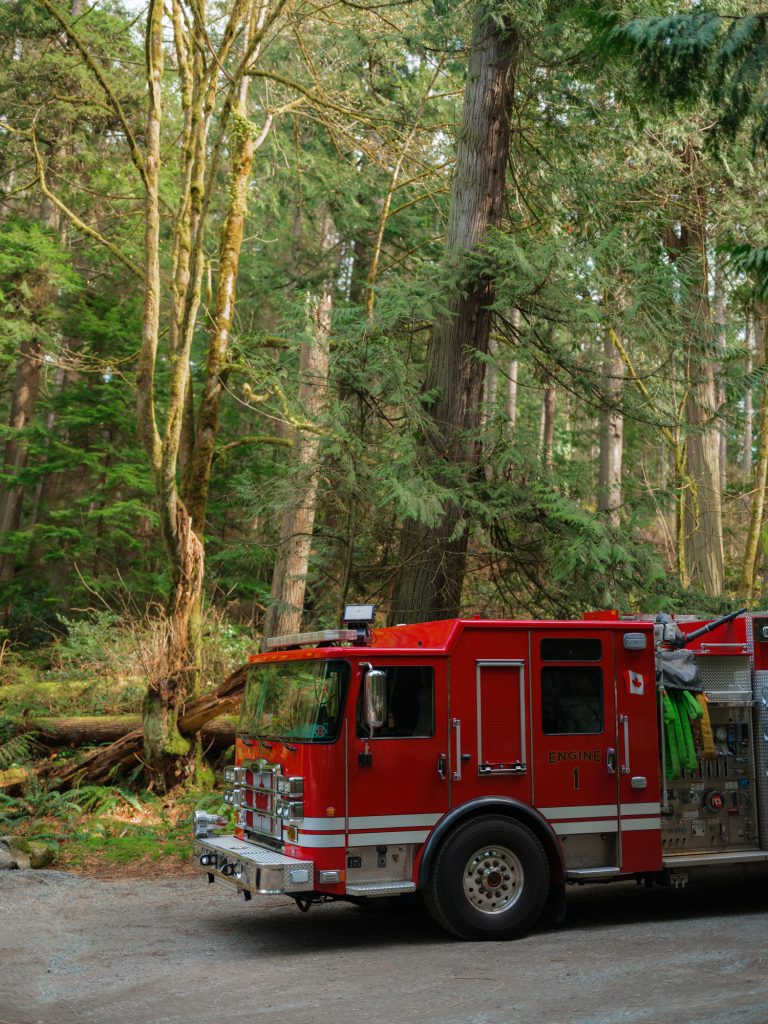
Photo credits: iStock
Planning for wildfire in your community
Local, regional, and First Nations governments have a key role in wildfire mitigation, preparedness, response, and recovery. Here are some considerations as you plan to protect your communities from wildfire:

Understand wildfire for your context
The diversity of landscapes in B.C. means that fire regime, behaviour, and risk will be different depending on your context.
- Fire regime describes the patterns of fire (e.g. size, severity, frequency, seasonality) in an ecosystem over time. Comparing the historical fire regime to current and future fire regimes can reveal how fire has changed and may change with climate change.
- Fire behaviour describes the ability of a wildfire to start and spread. It depends on factors like fuel, weather, and topography.
- Wildfire risk is the chance wildfires harm the people we care about, places we cherish, important assets (like our homes) and the very values and culture of our communities. Often risk is defined as the likelihood of a fire occurring, the severity or magnitude of fire, and the consequences if the fire occurs. Climate change will increase the frequency and severity of wildfires.
Understanding the fire regime and wildfire risk for your community will help you plan for wildfires and may be part of planning for your community’s Hazard, risk, vulnerability analysis tool, climate adaptation, and/or your Community Wildfire Resilience Plan. As a local decision-maker concerned about wildfire, you may choose to work with Indigenous and non-Indigenous fire experts, qualified professionals, or research teams to understand your community’s wildfire risk.
Indigenous Knowledges of fire continue to be an important source of information on climatic cycles and seasonality, fire behaviour, fire history, fire effects on vegetation, animals, and landscapes, and more. In addition to wildfire data, climate change data and wildfire research should be considered where possible – historical and future fire regimes, fuel types, wildfire risk, and the social and political dimension of wildfire are areas of research in B.C. and Canada.

Bring fire back on the land
Research shows reintroducing fire back on the land can help restore ecological resilience and reduce the risk of severe wildfires. For local decision makers, bringing fire back on the land may include advocating for diversified wildfire responses and implementing cultural and prescribed burning, depending on your fire regime and wildfire risk. Bringing fire back on the land will also require shifting public perspective and acceptance that some fires can be beneficial.
Wildfire response should include different strategies (e.g. modified response and managed wildfire) in addition to fire suppression. Modified response or managed wildfire are strategies where low risk wildfires are monitored but allowed to burn. Research has shown these strategies can help address fuel management, restore ecosystem resilience, create natural fire breaks and lower risk, while being cost effective. However, additional research is needed to determine what conditions are most appropriate for this type of response.
Cultural burning and prescribed fire both involve controlled application of fire to a defined area to achieve specific objectives (cultural objectives for cultural burning). Indigenous fire practitioners and researchers have consistently shown that Indigenous-led burning has many benefits including healthy ecosystems and lower risk of severe wildfires. First Nations across B.C., (e.g. Gitanyow, Williams Lake First Nation, Yunesit’in First Nation, and Lytton First Nation to name a few) have been reviving their cultural burning practices on their territories. Cultural and prescribed burning programs exist through BC Wildfire Service and First Nations’ Emergency Services Society.

Ecosystem- and community-specific risk reduction strategies
Local decision makers have a number of strategies they can implement to increase resilience and reduce the risk of wildfire to the values and assets they care about. Strategies should involve community engagement and trust building so that they are specific to community risks, local capacity, and interest. Additionally, strategies must also be ecosystem specific – what works for one region in the province may not work for your region.
Strategies can include education, interagency cooperation, cross-training, emergency planning, and fuel management through FireSmart. Research shows that retrofitting existing homes can have a $14-32 return on investment whereas construction of new homes with wildfire resilient building materials can have a $34-93 return on investment. The Community Resiliency Investment program and Forest Enhance Society of B.C. fund wildfire risk reduction projects.
Research also shows that legislation, planning, and development can help steer new housing away from high-risk areas.If more homes are built under current land use policies, wildfire damages could almost triple by 2030 in B.C., with losses concentrated in the Thompson-Okanagan, Kootenays, and Northeast regions.
Ecosystem-specific fuel treatments can also help reduce fuel load around communities. Some regions in B.C. have research on fuel treatment, for example the interior, but other areas such as coastal and boreal forests have less research on fuel treatments and wildfire.
Fuel management will need to be scaled up to support broader landscape level fire management. Exploring community forest tenures and collaborating with the forestry sector on forest management practices that reduce wildfire risk, manage for multiple values, and restore ecological resilience will be necessary.

Be prepared to respond to wildfire
Wildfires will still require rapid response and full suppression when they pose a high risk to communities. Local decision makers should ensure they have adequate training and a plan in the event of an emergency. Public education and communication around wildfire preparedness, how to protect against smoke, evacuation protocols etc. must be part of preparation.
Local governments and First Nations are well positioned (and increasingly demonstrating leadership) to respond to wildfires. Increasing local response capacity can help incorporate local and Indigenous Knowledges and priorities in response, maintain trust and self-determination for communities, and increase coordination with existing risk reduction and emergency planning. Increasing the role of Indigenous Guardians could also support local capacity and coordination for preparedness and response.

Continue to coordinate and collaborate
It will take every order of government, researchers, the private sector (particularly forestry), and individuals working together to co-exist with wildfire. Researchers, First Nations, and fire practitioners continue to advocate for more investment in wildfire mitigation and better coordination and collaboration across all orders of government. Shifting and sharing decision-making with First Nations and local communities will be critical so that solutions are specific to community and ecosystem needs. Indigenous-led or co-governance at all stages of wildfire management need to uphold the Declaration on the Rights on Indigenous Peoples and flow from equal decision-making authority.
Wildfire research continues in B.C., and researchers frequently support collaboration and knowledge exchange across Indigenous Knowledge keepers, fire practitioners, and communities. If you are interested in learning more about wildfire research or opportunities to collaborate, check out wildfire research groups and events from the following PICS universities:
References
- Abbott, G., & Chapman, M. (2018). Addressing the New Normal: 21st Century Disaster Management in British Columbia. Government of British Columbia. https://www2.gov.bc.ca/assets/gov/public-safety-and-emergency-services/emergency-preparedness-response-recovery/embc/bc-flood-and-wildfire-review-addressing-the-new-normal-21st-century-disaster-management-in-bc-web.pdf
- Ascione, C. (2025, April 14). Why your organization needs a boundary spanner: A Q&A with Dr. Kira Hoffman. Pacific Institute for Climate Solutions. https://climatesolutions.ca/why-your-organization-needs-a-boundary-spanner-a-qa-with-dr-kira-hoffman/
- Asfaw, H. W., Sandy Lake First Nation, McGee, T. K., & Cardinal Christianson, A. (2019). A qualitative study exploring barriers and facilitators of effective service delivery for Indigenous wildfire hazard evacuees during their stay in host communities. International Journal of Disaster Risk Reduction, 41(101300).https://doi.org/10.1016/j.ijdrr.2019.101300
- Baron, J. N. (2025). Landscape-level fire regime disruption: understanding and managing altered fire regimes in interior British Columbia, Canada (T). University of British Columbia. Retrieved from https://open.library.ubc.ca/collections/ubctheses/24/items/1.0447857
- Baron, J. N., Gergel, S. E., Hessburg, P. F., & Daniels, L. D. (2022). A century of transformation: fire regime transitions from 1919 to 2019 in southeastern British Columbia, Canada. Landscape Ecology, 37(10), 2707–2727. https://doi.org/10.1007/s10980-022-01506-9
- Brown, E. & Hunt, B. P. (2025). Cumulative effects of fire in the Fraser River basin on freshwater quality and implications for the Salish Sea. Science of the Total Environment, 978(179416). https://doi.org/10.1016/j.scitotenv.2025.179416
- Cardinal Christianson, A., Johnston, L. M., Oliver, J. A., Watson, D., Young, D., MacDonald, H., Little, J., Macnab, B., & Gonzalez Bautista, N. (2024) Wildland fire evacuations in Canada from 1980 to 2021. International Journal of Wildland Fire 33(WF23097). https://doi.org/10.1071/WF23097
- Climate Atlas of Canada. (n.d.). Wildfires, water, and our health. Prairie Climate Centre. https://climateatlas.ca/wildfires-water-and-our-health
- Copes-Gerbitz, K., Hagerman, S. M., & Daniels, L. D. (2022). Transforming fire governance in British Columbia, Canada: an emerging vision for coexisting with fire. Regional Environmental Change, 22(48). https://doi.org/10.1007/s10113-022-01895-2
- Copes-Gerbitz, K., Pascal, D., Comeau, V. M., & Daniels, L. D. (2024). Cooperative community wildfire response: Pathways to First Nations’ leadership and partnership in British Columbia, Canada. International Journal of Disaster Risk Reduction, 114(104933). https://doi.org/10.1016/j.ijdrr.2024.104933
- Cram, S. (2024, August 26). Could climate change cause more lightning — and spark more wildfires? CBC News. https://www.cbc.ca/news/canada/edmonton/could-climate-change-cause-more-lightning-and-spark-more-wildfires-1.7302700
- Cultural burning & prescribed fire. (n.d.). Cultural burning. https://prescribedfire.ca/cultural-burning/
- Cultural burning & prescribed fire. (n.d.). What is prescribed fire? https://prescribedfire.ca/what-is-prescribed-fire/
- Daniels, L. D., Dickson-Hoyle, S., Baron, J. N., Copes-Gerbitz, K., Flannigan, M. D., Castellanos-Acuna, D., Hoffman, K. M., Bourbonnais, M., Wilkinson, S. L., Roeser, D., Harvey, J. E., Laflamme, J., Tiribelli, F., Whitehead, J., Leverkus, S. E., & Gray, R. W. (2025). The 2023 wildfires in British Columbia, Canada: impacts, drivers, and transformations to coexist with wildfire. Canadian Journal of Forest Research, 55, 1-18. https://doi.org/10.1139/cjfr-2024-0092
- Dickson-Hoyle, S., & John, C. (2021). Elephant Hill: Secwépemc Leadership and Lessons Learned from the Collective Story of Wildfire Recovery. https://www.srssociety.com/docs/elephant_hill_-_secwépemc_leadership_and_lessons_learned.pdf
- Dickson-Hoyle, S., Ignace, R. E., Ignace, M. B., Hagerman, S. M., Daniels, L. D. (2021). Walking on two legs: a pathway of Indigenous restoration and reconciliation in fire-adapted landscapes. Restoration Ecology, 30(4). https://doi.org/10.1111/rec.13566
- Dickson-Hoyle, S., Copes-Gerbitz, K., Hagerman, S. M., & Daniels, L. D. (2023). Community Forests advance local wildfire governance and proactive management in British Columbia, Canada. Canadian Journal of Forest Research, 54(3). https://doi.org/10.1139/cjfr-2023-0089
- Donaldson, D. (2024, September). Economic impacts and implications of catastrophic fire. Victoria, Canada: POLIS Project on Ecological Governance, Centre for Global Studies, University of Victoria. https://poliswildfireproject.org/wp-content/uploads/2024/09/EE_Online_Dec16.pdf
- Donaldson, D., Barnett, A., Brandes, O.M., Kriese, K., & O’Riordan, J. (2024). Learning to Live with Fire: State of Wildfire in B.C., Policy, Programs, & Priorities – A Primer. Victoria, Canada: POLIS Project on Ecological Governance, Centre for Global Studies, University of Victoria. https://poliswildfireproject.org/wp-content/uploads/2024/03/State-of-Play_WebCopy.pdf
- Egyed, M., Blagden, P., Plummer, D., Makar, P., Matz, C., Flannigan, M., MacNeill, M., Lavigne, E., Ling, B., Lopez, D. V., Edwards, B., Pavlovic, R., Racine, J., Raymond, P., Rittmaster, R., Wilson, A., & Xi, G. (2022). Air Quality. In P. Berry & R. Schnitter (Eds.), Health of Canadians in a Changing Climate: Advancing our Knowledge for Action. Ottawa, ON: Government of Canada. https://changingclimate.ca/health-in-a-changing-climate/chapter/5-0/
- Emergency Management BC. (2020). Hazard, risk and vulnerability analysis (HRVA) for local authorities and First Nations. https://www2.gov.bc.ca/assets/gov/public-safety-and-emergency-services/emergency-preparedness-response-recovery/local-government/hrva/guides/companion_guide_to_the_hrva.pdf
- Erni, S., Wang, X., Swystun, T., Taylor, S. W., Parisien, M.-A., Robinne, F. -N., Eddy, B., Oliver, J., Armitage, B., & Flannigan, M. D. (2024). Mapping wildfire hazard, vulnerability, and risk to Canadian communities. International Journal of Disaster Risk Reduction, 101(1). https://doi.org/10.1016/j.ijdrr.2023.104221
- ireSmart BC. (n.d.). Farm & Ranch FireSmart Assessment. https://firesmartbc.ca/farm-and-ranch-wildfire-preparedness/
- FireSmart BC. (n.d.). FireSmart Toolkit. https://firesmartbc.ca/toolkit/
- Forest Practices Board. (2023). Forest and fire management in BC: Toward landscape resilience. https://www.bcfpb.ca/wp-content/uploads/2023/06/SR61-Landscape-Fire-Management.pdf
- Forest Practices Board. (2025). Help or hinder? Aligning forestry practices with wildfire risk reduction. https://www.bcfpb.ca/wp-content/uploads/2025/06/SIR56-Help-or-Hinder.pdf
- Government of British Columbia. (2023, May 16). All about wildfire. https://www2.gov.bc.ca/gov/content/safety/wildfire-status/wildfire-response/about-wildfire
- Government of British Columbia. (2024, April 26). Wildfire averages. https://www2.gov.bc.ca/gov/content/safety/wildfire-status/about-bcws/wildfire-statistics/wildfire-averages
- Government of British Columbia. (2024, June). Wildfire preparedness guide. https://www2.gov.bc.ca/assets/gov/public-safety-and-emergency-services/emergency-preparedness-response-recovery/embc/preparedbc/preparedbc-guides/wildfire_preparedness_guide.pdf
- Government of British Columbia. (2024, August 12). Declaration on the Rights of Indigenous Peoples Act. https://www2.gov.bc.ca/gov/content/governments/indigenous-people/new-relationship/united-nations-declaration-on-the-rights-of-indigenous-peoples
- Government of British Columbia. (2025, April 11). Wildfire season summary. https://www2.gov.bc.ca/gov/content/safety/wildfire-status/about-bcws/wildfire-history/wildfire-season-summary
- Government of British Columbia. (2025, May 22). Emergency management training. https://www2.gov.bc.ca/gov/content/safety/emergency-management/local-emergency-programs/em-training-program
- Government of British Columbia. (2025, June 18). Create and maintain an emergency plan. https://www2.gov.bc.ca/gov/content/safety/emergency-management/local-emergency-programs/establishing-an-emergency-program
- Hoffman, K. M., Cardinal Christianson, A., Dickson-Hoyle, S., Copes-Gerbitz, K., Nikolakis, W., Diabo, D. A., McLeod, R. Michell, H. J., Al Mamun, A., Zahara, A. Mauro, N., Gilchrist, J., Myers Ross, R., & Daniels, L. D. (2022). The right to burn: barriers and opportunities for Indigenous-led fire stewardship in Canada.Perspective, 7(1). https://doi.org/10.1139/facets-2021-0062
- Huffman, M. R. (2013). The Many Elements of Traditional Fire Knowledge: Synthesis, Classification, and Aids to Cross-cultural Problem Solving in Fire-dependent Systems Around the World. Ecology and Society, 18(4). http://www.jstor.org/stable/26269435
- Indigenous Leadership Initiative. (n.d.). Fire stewardship. https://www.ilinationhood.ca/fire-stewardship
- Indigenous Leadership Initiative. (2022). The role of First Nations Guardians in wildfire response and management: A proposed national strategy. https://static1.squarespace.com/static/5f8367238502ed181766aaf0/t/6345b504eeaf036eac9acc78/1665512739046/Wildfire+Strategy+Report+-+draft+v5+%281%29.pdf
- Insurance Bureau of Canada. (2023, October 3). Okanagan and Shuswap area wildfires cause over $720 million in insured damage. https://www.ibc.ca/news-insights/news/okanagan-and-shuswap-area-wildfires-cause-over-720-million-in-insured-damage
- Kirchmeier-Young, M. C., Gillett, N. P., Zwiers, F. W., Cannon, A. J., & Anslow, F. S. (2019). Attribution of the influence of human-induced climate change on an extreme fire season. Earth’s Future, 7(1), 2–10. https://doi.org/10.1029/2018EF001050
- Kirese, K., Barnett, A., Brandes, O. M., Donaldson, D., O’Riordon, J., & Shepherd, L. (2025). Learning to live with fire: Beneficial fire in B.C. – An exploration of how fire can contribute to wildfire resilience. Victoria, Canada: POLIS Project on Ecological Governance, Centre for Global Studies, University of Victoria. https://poliswildfireproject.org/wp-content/uploads/2025/05/BF_Online_Final.pdf
- Kreider, M. R., Higuera, P. E., Parks, S. A., Rice, W. L., White, N., & Larson, A. J. (2024). Fire suppression makes wildfires more severe and accentuates impacts of climate change and fuel accumulation. Nature Communications, 15, Article 2412. https://www.nature.com/articles/s41467-024-46702-0#citeas
- Lake, F., & Cardinal Christianson, A. (2020). Indigenous fire stewardship. In S. L. Manzello (Ed.), Encyclopedia of wildfires and wildland-urban interface (WUI) (pp. 714–721). Springer International Publishing. https://doi.org/10.1007/978-3-319-52090-2
- Lewis, M., Christianson, A., & Spinks, M. (2018). Return to flame: Reasons for burning in Lytton First Nation, British Columbia. Journal of Forestry, 116(2), 143–150. https://doi.org/10.1093/jofore/fvx007
- Michell, P. (2023, June 12). Hope flows from action: Rebuilding with resilient foundations in B.C.’s Fraser Canyon Region. Canadian Climate Institute.https://climateinstitute.ca/publications/hope-flows-from-action-rebuilding-with-resilient-foundations-fraser-canyon-region/
- Natural Resources Canada. (n.d.). Canadian Wildland Fire Information System. https://cwfis.cfs.nrcan.gc.ca/home
- Natural Resources Canada. (2025, January 15). Fire regime. Government of Canada. https://natural-resources.canada.ca/climate-change/climate-change-impacts-forests/fire-regime
- Natural Resources Canada. (2025, January 15) Fire weather. Government of Canada. https://natural-resources.canada.ca/climate-change/climate-change-impacts-forests/fire-weather
- Nikolakis, W., & Ross, R. M. (2022). Rebuilding Yunesit’in fire (Qwen) stewardship: Learnings from the land. The Forestry Chronicle, 98. https://pubs.cif-ifc.org/doi/abs/10.5558/tfc2022-001
- Ness, R., Miller, S., Bossio, C. F., Pelai, R., & Carriere, Z. (2025). Close to Home: How to build more housing in a changing climate. Canadian Climate Institute. https://climateinstitute.ca/wp-content/uploads/2025/02/Close-to-Home-Report-Canadian-Climate-Institute.pdf
- Pacific Salmon Foundation. (n.d.). Wildfire playbook. https://psf.ca/wildfire-playbook/#:~:text=Wildfires%20and%20Salmon&text=Wildfires%20have%20caused%20significant%20negative,of%20in%2Dstream%20habitat%20features.
- Parisien, M. -A., Barber, Q. E., Bourbonnais, M. L., Daniels, L. D., Flannigan, M. D., Gray, R. W., Hoffman, K. M., Jain, P., Stephens, S. L., Taylor, S. W., & Whitman, E. (2023). Abrupt, climate-induced increase in wildfires in British Columbia since the mid-2000s. Communications Earth and Environment, 4(1). https://doi.org/10.1038/s43247-023-00977-1
- Porter, K.A., Scawthorn, C.R., & Sandink, D. (2021). An impact analysis for the national guide
- for wildland-urban interface fires. Prepared for the National Research Council of Canada. Institute for Catastrophic Loss Reduction, Toronto, ON. https://www.iclr.org/wp-content/uploads/2021/05/ICLR-SPA-Risk-Impact-Analysis-for-the-National-WUI-Fire-Guide-2021.pdf
- Potiatynyk, M. (2025, June 13). Bringing back Indigenous practices in B.C. wildfire management. Saanich News. https://www.saanichnews.com/news/bringing-back-indigenous-practices-in-bc-wildfire-management-8034115
- Prichard, S. J., Hessburg, P. F., Hagmann, R. K., Povak, N. A., Dobrowski, S. Z., Hurteau, M. D., Kane, V. R., Keane, R. E., Kobziar, L. N., Kolden, C. A., North, M., Parks, S. A., Safford, H. D., Stevens, J. T., Yocom, L. L., Churchill, D. J., Gray, R. W., Huffman, D. W., Lake, F. K., & Khatri-Chhetri, P. (2021). Adapting western North American forests to climate change and wildfires: 10 common questions. Ecological Applications, 31(8). https://doi.org/10.1002/eap.2433
- Rutherford, K. (2023). Fuel treatment efficacy in fire-prone forests of interior British Columbia, Canada (T). University of British Columbia. Retrieved from https://open.library.ubc.ca/collections/ubctheses/24/items/1.0432793
- SFU Mitigating Wildfire Initiative. (2023). Landscape Resilience and Wildfire: A Primer for Collaborative Dialogue. Morris J. Wosk Centre for Dialogue. https://www.sfu.ca/content/dam/sfu/dialogue/ImagesAndFiles/Initiatives/MitigatingWildfire/Wildfire%20and%20Landscape%20Resilience%20in%20the%20Carboo%20Primer.pdf
- Sharp, K., & Krebs, A. (2018). Trial by Fire: Nadleh Whut’en and the Shovel Lake Fire. https://www.resonantstrategic.ca/wp-content/uploads/2018/12/Trial-By-Fire.pdf
- SHIFT Collaborative. (2024). Chapter 5: Wildfires. In L. Ronald & K. Klein (Eds.), Climate change and health in British Columbia: From risk to resilience (pp. 84–109). Prepared for the B.C. Ministry of Health. Victoria, BC: SHIFT Collaborative. https://nrs.objectstore.gov.bc.ca/xedyjn/Projects/2023/ClimateReadyBC/page_health_r2r/R2R-Chapter-5.pdf
- Shingler, B. (2023, June 6). As climate changes, insurance is becoming more complex – and pricey. CBC News. https://www.cbc.ca/news/canada/climate-change-insurance-fires-1.6863796
- Simmons, M. (2024, June 1). The healing power of fire. The Narwhal. https://thenarwhal.ca/gitanyow-cultural-burn-2024/
- Taylor, S., Daniels, L. D., Copes-Gerbitz, K., & Forbes, K. (2022). Wildfires. In S. Safaie, S. Johnstone & N. L. Hastings (Eds.), Resilient Pathways Report: Co-Creating New Knowledge for Understanding Risk and Resilience in British Columbia. Geological Survey of Canada; pp. 102–129; doi: 10.4095/330521
- Union of BC Municipalities. (2020). Community wildfire resilience plan instruction guide. https://www.ubcm.ca/sites/default/files/2021-05/2021%20CWRP%20Supplemental%20Instruction%20Guide.pdf
- Vancouver Sun. (2023, September 27). Nearly a billion in wildfire costs helps to push B.C.’s projected deficit to $6.7B. https://vancouversun.com/news/local-news/b-c-s-projected-deficit-grows-to-6-7-billion-for-2023-2024-fiscal-year#:~:text=The%20new%20projection%20of%20%246.7,quarterly%20report%20for%202023%2D2024.&text=The%20report%20says%20updated%20wildfire,%241.2%20billion%20as%20prices%20declined.
- Verhaeghe, C., Feltes, E., & Stacey, J. (2019). Nagwedizk’an Wanes Gangu Chi’inidzed Ganexwilagh: The Fires Awakened Us. https://tsilhqotin.ca/wp-content/uploads/2025/01/Tsilhqot-in-Nation-Wildfire-Report-The-Fires-Awakened-Us-2019.pdf
- Wang, X., Parisien, M. -A., Taylor, S. W., Candau, J. -N., Stralberg, D., Marshall, G. A., Little, J. M., & Flannigan, M. D. (2017). Projected changes in daily fire spread across Canada over the next century. Environmental Research Letters, 12(2). https://doi.org/10.1088/1748-9326/aa5835
- Woo, H., Bone, C., Nadeem, K., & Taylor, S. W. (2024). Influence of mountain pine beetle outbreaks on large fires in British Columbia. Ecosphere, 15(1). https://doi.org/10.1002/ecs2.4722
- Yoon, J. (2024, August 12). Wildfires can take a heavy toll on mental health. Here’s what researchers say should be done to help evacuees. CBC News.https://www.cbc.ca/news/health/wildfires-mental-health-1.7289606
Alyssa Hill is a project analyst with the Pacific Institute for Climate Solutions.
